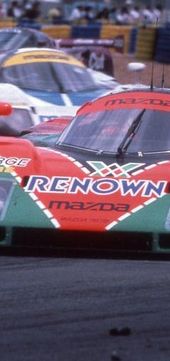.
Mazda Millenia
| {{{Image}}} | |
| Mazda Millenia | |
|---|---|
| Mazda | |
| aka | |
| Production | |
| Class | |
| Body Style | |
| Length | |
| Width | |
| Height | |
| Wheelbase | |
| Weight | |
| Transmission | |
| Engine | |
| Power | |
| Similar | |
| Designer | |
The Mazda Millenia was originally planned as the smaller of two luxury cars for Mazda's luxury brand, Amati. As Mazda's dwindling finances no longer permitted the launch of the Amati brand, the Millenia was launched in the autumn of 1993 in Europe (as the Xedos9) and Japan (as the Eunos 800) under the Mazda brand. The car was launched in the US in 1995 as the Millenia, and replaced the 929 as Mazda's flagship sedan.
Having been developed for a separate audience from typical Mazda customers, the Millenia boasted a myriad of finer details. It was engineered to far greater levels of perceived quality than existing Mazda cars, such as interior plastic, panel gap and thicker paint coating. The Millenia was assembled along with the smaller Xedos6 in a new production line presumably set up for Amati cars.
The Millenia does not have a predecessor or replacement in the Mazda product line. It appears to have received a brand-new platform, although suspension at both ends resembled that of the 1991 Mazda Sentia. It is the only production car in the world to employ a Miller cycle engine. Yaw-sensitive 4-wheel steering was available as an option in Japan; Mazda claimed that with this feature, the Millenia was capable of passing the elk test at speeds comparable to the BMW 850i, surpassing the Z32 Nissan 300ZX.
In 1997 the Japanese Eunos 800 was also renamed the Millenia as Mazda reorganized its Eunos dealership network. This name change was accompanied by a significant facelift that included some cost-saving measures. For instance, the hood was downgraded from aluminum to steel.
Towards the end of its lifespan, the Miller Cycle engine was dropped from the lineup, but the Millenia did see ten years of production, which fans consider fitting as "a decade-long benchmark" was the catchphrase used to describe the car at its Japanese launch.
The Millenia was dropped after 2002, because of slow sales, and was replaced by the Mazda6 (which became the new flagship Mazda) for 2003.
Engines:
- 2.5 L KL-ZE V6
- 2.3 L KJ-ZEM V6 (Miller cycle) - 210 bhp
2.0 L also available in Europe at launch

